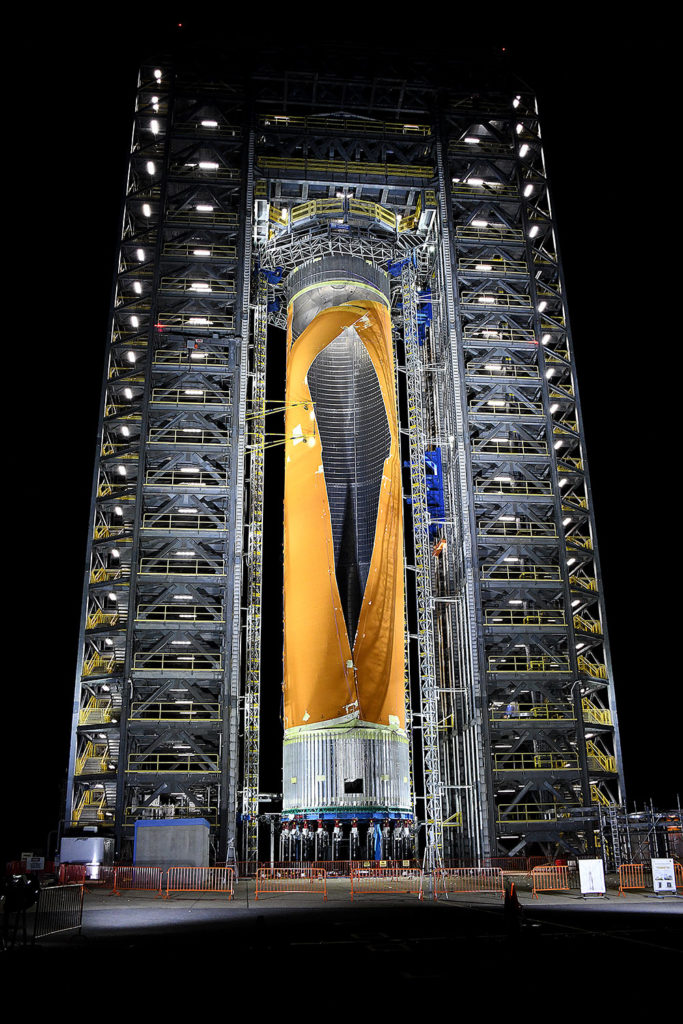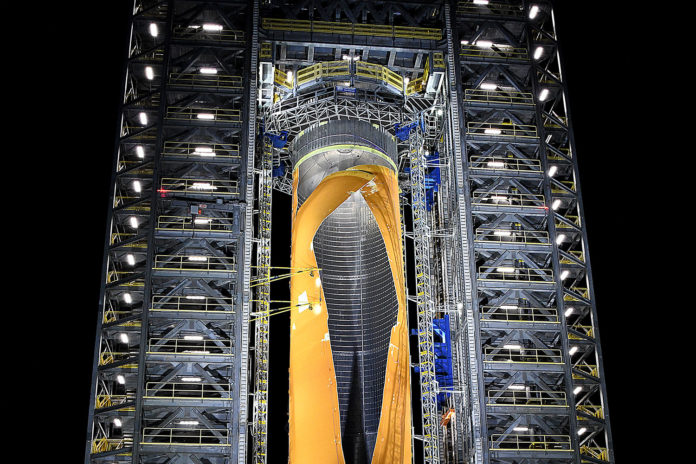After a few months of delay, NASA has finally presented its latest rocket, called SLS, for “Space Launch System.” According to Jim Bridenstine, director of the agency, this is the most powerful rocket ever built that will send NASA astronauts to the Moon in 2024 as part of the Artemis project.
A few days ago, the US Aerospace Agency (NASA) passed one of the last major tests of preparation for sending the first astronauts to the Moon in 52 years. At NASA’s Marshall Space Flight Center in Huntsville, Alabama, NASA engineers pushed the capabilities of their new Space Launch System to the limit.

On December 5, NASA and Boeing engineers performed the planned SLS hydrogen tank rupture test. The test version of the Space Launch System rocket’s liquid hydrogen tank withstood more than 260% of expected flight loads over five hours before engineers detected a buckling point, which then ruptured.
The tank was filled with nitrogen; numerous sensors were installed on its body, designed to determine the load, pressure, and temperature, as well as high-speed cameras and microphones. In order to recreate the overloads that occur during the start of the SLS, hydraulic pistons were used.
According to experts, the initial tank rupture occurred at the point predicted by the simulation results. At the same time, the load of which was subjected to only 3% differed from the calculated one. Thus, the test not only demonstrated the reliability of the tank design but also confirmed the correctness of the models used by Boeing specialists in its design and behavior assessment.
